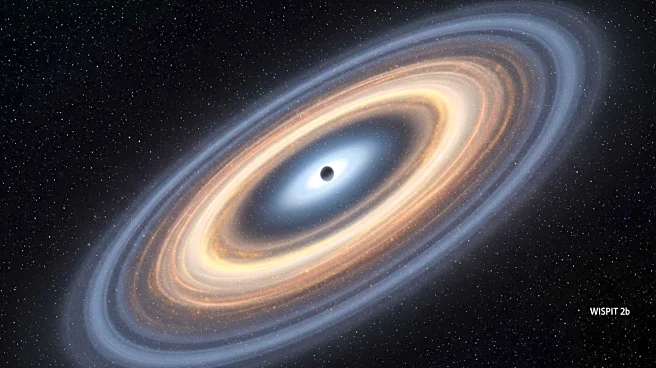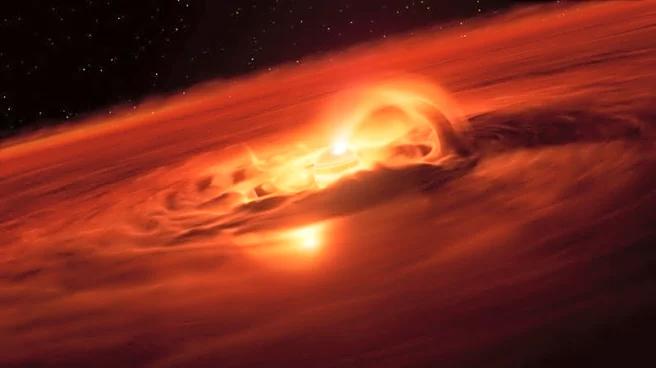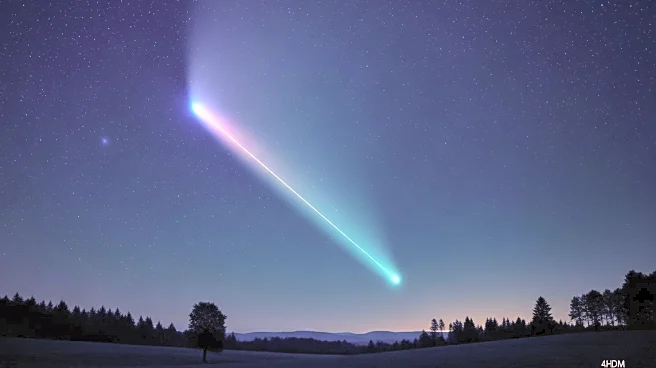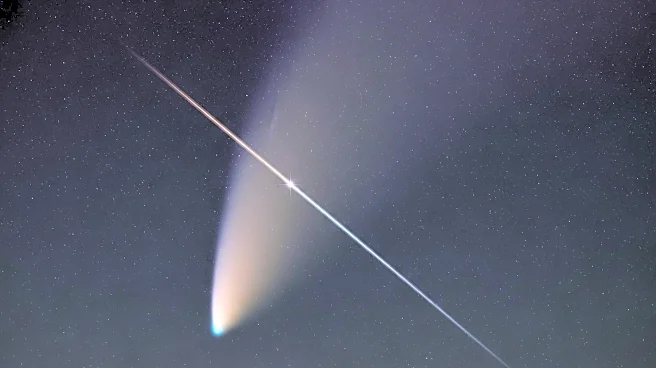What's Happening?
Astronomers have captured a striking image of a protoplanet named WISPIT 2b using the Magellan Telescope in Chile and the Large Binocular Telescope in Arizona. This young gas giant, estimated to be about five times more massive than Jupiter and just five million years old, is seen within a ring-shaped gap in the dusty disk surrounding its young parent star, WISPIT 2. The image provides the first direct evidence of a growing planet observed within the very ring gap that it's shaping, confirming predictions about gas giant formation. WISPIT 2b was initially detected using the European Southern Observatory's Very Large Telescope Spectro-Polarimetric High-contrast Exoplanet REsearch instrument (VLT-SPHERE) in northern Chile, which revealed ringlike bands and a conspicuous gap hinting at the protoplanet's activity.
Why It's Important?
The observation of WISPIT 2b offers significant insights into the process of planet formation, particularly for gas giants. The ability to directly observe a planet forming within a ring gap supports longstanding theories about how these planets shape their surroundings by scattering material outward. This discovery could enhance our understanding of planetary systems and the conditions necessary for planet formation. It also underscores the capabilities of advanced telescopes and adaptive optics systems in capturing detailed images of distant celestial phenomena, potentially leading to further discoveries in the field of astronomy.
What's Next?
Further observations and studies of WISPIT 2b and its surrounding environment are likely to continue, as astronomers seek to understand more about the dynamics of planet formation. The faint second source spotted in another inner ring gap could indicate the presence of a sibling world in formation, prompting additional research to confirm its existence and characteristics. These findings may influence future astronomical research and the development of new technologies to observe distant exoplanets and their formation processes.
Beyond the Headlines
The discovery of WISPIT 2b within its ring gap highlights the intricate processes involved in planet formation and the role of protoplanetary disks. It raises questions about the potential for similar formations in other star systems and the implications for understanding the diversity of planetary systems in the universe. The ability to observe such phenomena directly may lead to new theories and models about the evolution of planets and their atmospheres.












